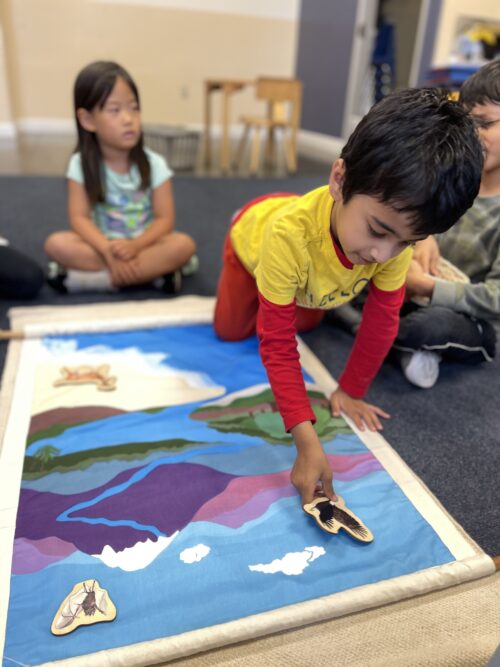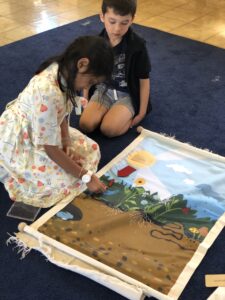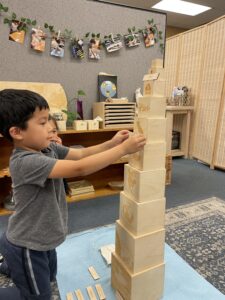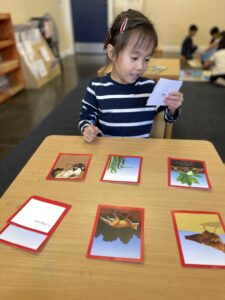
The Cosmic Curriculum and Biome work starts as early as 3 years. The primary students have an introduction to plants animals, water, soil, air, and the sun.
The primary students also work with continent geography with political boundaries. They learn about the countries, culture, food, and flags.
Once the primary child becomes an MSOSV kindergarten student, the curriculum switches from geography with political boundaries to the Biomes.
Working with Waseca (in connection with the Waseca reading program used in the MSOSV classroom), the transition to the Waseca Biomes is easy for the kindergarten student.
 MSOSV starts with the Introduction to the Biomes and the North America Biome Study.
MSOSV starts with the Introduction to the Biomes and the North America Biome Study.
Once the kindergarten students finish the Introduction to the Biomes, they transition right into the in-depth study of the North America Biome. Sometimes, the kindergarten group finishes the North America Biome before the end of the school year. When this happens, the kindergarten students decide as a group which continent biome they would like to study next.
With the Biome work the students are presented with nomenclature cards as well as a series of hands-on experiments that introduce the student to the parts of the biomes, vertebrates, plants, climate, and the different biomes found on our planet.
The lessons on energy from the sun, soil, air, water plants and animals are directly linked to the MSOSV and Waseca Reading Program the kindergarten students begin as early as age 4.
As the kindergarteners’ progress through the school year, they will begin to label the Backyard Biome Mat with grammar cards and build sentences. Using the Cosmic Nest Boxes the students can better understand their place in the universe.
The North America Readers include 9 readers with stories pertaining to the continent of North America. The continent readers allow emerging readers to read independently for content as they are studying the continent as a biome.: these readers introduce phonetic elements with the same progression and color-coding as the Waseca Reading Program.
First, the student reads the unillustrated book so that she can focus on decoding. Next, the student reads the text on the corresponding text cards to match the included picture cards. Numbers on the back of the cards serve as a control for error. Finally, the student can use the master sheets to demonstrate confidence and comprehension by illustrating a copy of the story to take home.
 The MSOSV kindergarten students spend one to two days per week working on the Biome Continent Study. Because this work takes place during the kindergarten work period, the Montessori guide is able to work with the small group and 1:1.
The MSOSV kindergarten students spend one to two days per week working on the Biome Continent Study. Because this work takes place during the kindergarten work period, the Montessori guide is able to work with the small group and 1:1.
If you missed any of the previous Kindergarten topics, you can find them all on our blog page.